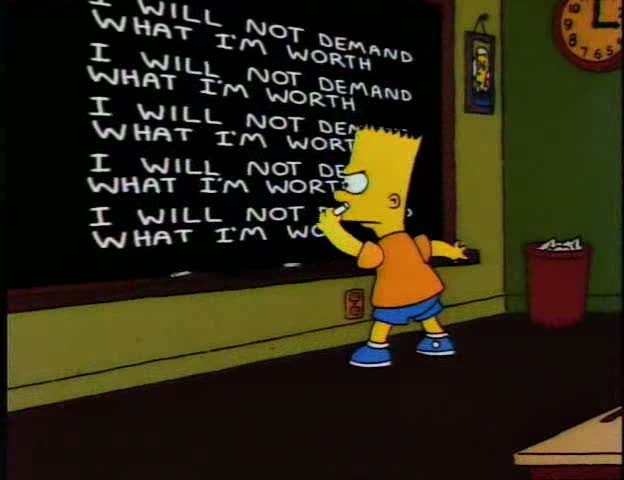In this episode Terence and Philip tackle the business side of the Biz: where we’re at, what being in business means and how to price yourself appropriately.
During the show Terry mentioned some online resources for calculating hourly rate, etc.
Calculate your business costs http://freelanceswitch.com/rates/
Cost of Doing Business calculator http://www.nppa.org/professional_development/business_practices/cdb/cdbcalc.cfm
Plumbing calculator (for when you decide to switch businesses!) http://www.masterplumbers.com/utilities/costcalc/
And thanks to Rob Birnholz of Absolute Motion Graphics for this pertinent comment:

Many thanks to Isai Espinoza for editing the show again and making us sound smart.
Podcast: Play in new window | Download (Duration: 29:14 — 8.4MB)
Subscribe: RSS
Thanks for covering this issue in the podcast. It’s an issue that isn’t covered enough.
I am a colorist as well. In the past few years, I’ve noticed that the shooting quality of the TV shows I’ve worked on have gone down considerably. Mainly because the assistant camera operators have now become the main camera operators in an attempt to save money. When the footage comes back to post, there’s a ton of problems. Color correction becomes MORE essential then before because costs have been cut. I’m frequently asked, “Can you save this scene?” I am known to say that my job is based on other people f’ing up.
To use your plumber analogy, if you standing in a pool of water, the plumber can charge you whatever he wants. The one thing we can count on is that people will try to save money. They just have to understand that it will cost more money in the long run.
From my perspective, producers are requesting more quality solely because it can be done in post. I’m constantly asked to use windows, change day to night, make sunsets, or emulate grads. In some circumstances, it is cheaper to do certain things in post since it doesn’t require a location, crew, lighting, craft service, travel, etc. Also, green screen footage has increased because of these reasons, and we all know how much work that is in post! 😉
Your average Joe might not be able to articulate why picture quality is good or bad. However, if you ask someone if they can tell the difference in quality when shown NatGeo or Discovery compared to HGTV, I’m sure they could see it. The point is someone should not be able to see color correction or editing. As the saying goes, “The best complement is no complement at all.” The work should be invisible, but that doesn’t make it any easier to sell.
You know what would be a very useful website, or atleast blogpost, is a list of real-world rates for the video industry.
Idea of a starting video editor rate, video editor with 2 years experience rate, 10 years experience rate, etc.
Color corrector, cameraman, soundmixer, etc.
Help give those people who are way undercharging just to get experience and idea of what they should say their rate is and feel confident that they can ask that + their time is worth that much.
Some kid out of film school wants to start editing freelance projects but is tempted to do everything for free just to be in the biz, tell him how much he should charge and maybe more will charge that much and stick to his guns in negotiation.
Josh,
The question isn’t whether someone would notice the difference in quality between an HGTV product and NatGeo side by side. The question is will they stop watching one over the other because of that difference?
Chris,
This has been tried in the past. There are sites where you can get a general idea of current rates. And you can always find the union rate on the union websites.
The problem is these are highly fluctuating numbers by market and by time of year. I can tell you that in LA, most finishing editors aren’t making any more per hour than they were ten years ago. Which means they are making less due to inflation.
Sorry Terry. I must have misunderstood. I thought the question was if anyone could see the difference between good and bad quality in general. My bad…
Josh, that is the question in the show, I was expanding based on your post. 🙂
Ah. The web. So easy to miss subtlety 😉
As you’ve said before, what looks good is a subjective thing. However, subconsciously I believe viewers would see a show as “cheap” or “low budget” but not be able to understand exactly why. Our attention spans are so low that someone might change the channel (wait, do we still do that??) just because a show seems second rate UNLESS the content is so amazing that we see past all those issues. For instance, if the mix is so bad you can barely hear what’s going on, you WILL lose people because they can’t actually follow the content, even if it is good.
Love your show.
Another great episode, packed with good info.
I re-tweeted it, so more can enjoy the conversation.
Thanks for all you do to help the rest of us.
Best,
J
Glad to be of service. 🙂
Graphic designers have faced the issue of explaining and defending their value-added for many years. Here’s the resource they developed:
http://www.aiga.org/why-design/
Could be a model for some of the needs discussed in the programme.
Good resource Peter, just sent it to our graphics department.